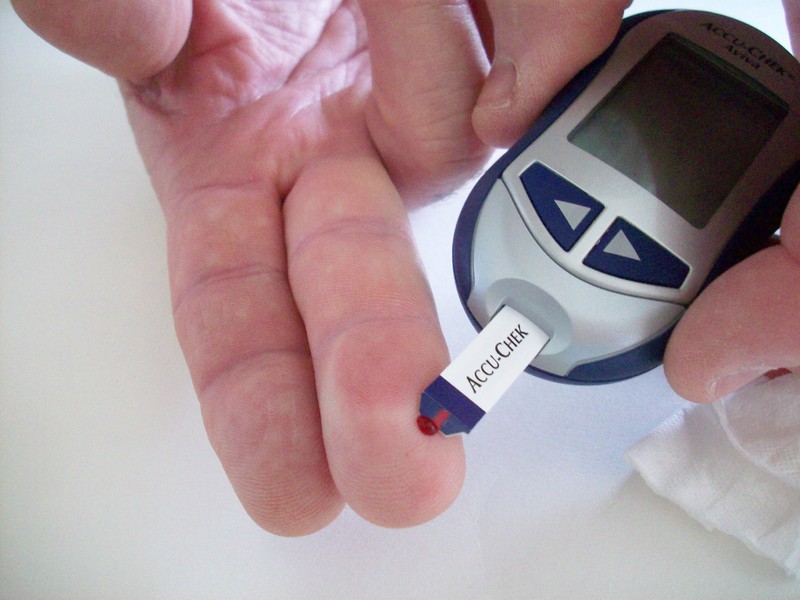Sub-Saharan Africa diabetes threat
07 July 2017 | Story Supplied.
As sub-Saharan countries struggle with the current burden of diabetes, new estimates suggest that costs associated with the disease could more than double and may reach up to US$59.3 billion per year by 2030, if type 2 diabetes cases continue to increase. The region is ill-prepared to cope with a growing health burden.
The findings have been published in a new report involving Professor Naomi (Dinky) Levitt, head of the Division of Diabetic Medicine and Endocrinology in the Department of Medicine at Groote Schuur Hospital and UCT.
The report says that diabetes and its complications could reverse some of the recent health gains in sub-Saharan Africa, overwhelm the region’s health systems and cripple patients’ personal finances as they fund their own healthcare.
The Lancet Diabetes & Endocrinology Commission on diabetes in sub-Saharan Africa, launched on 6 July 2017 in London, provides a comprehensive and up-to-date analysis of the burden of diabetes across the region.
Part of the commission from its inception, Levitt anticipates that the report will serve as a catalyst for concerted action by policymakers, funding agencies and researchers to ensure that people with diabetes in sub-Saharan Africa have an opportunity to achieve much-improved health outcomes and quality of life.
Currently, only half of the people with diabetes in sub-Saharan Africa are aware that they have the disease, and only one in 10 (11%) receive the drugs they need.
Lifestyle risks
In recent years, rapid societal transitions that are producing increases in wealth, urbanisation, changing lifestyle and eating habits, more sedentary work practices and ageing populations across sub-Saharan countries have led to increased risk of type 2 diabetes.
The report estimates that the economic cost of diabetes in sub-Saharan Africa in 2015 totalled $19.5 billion, equivalent to 1.2% of the gross domestic product (GDP). On average, countries in the region spend 5.5% of their GDP on health.
More than half of this economic cost (56%, $10.8 billion) was spent on accessing diabetes treatment, including medication and hospital stays – and one half of these costs were out-of-pocket (paid for by the patients), putting a huge financial burden on people with diabetes. The remaining economic costs were a result of productivity losses.
“These estimates show the vast economic burden that diabetes places on sub-Saharan Africa, and should motivate policymakers to increase resources and efforts to overcome this looming health challenge,” said lead author Professor Rifat Atun of Harvard University in the US.
“Our figures illustrate the economic cost of inaction. However, the wider cost of inaction is the risk of losing ground on some of the region’s biggest health achievements of the past few decades, as diabetes cases further increase and costs spiral. In its current state, sub-Saharan Africa is not at all prepared for the increasing burden of diabetes caused by rapid, ongoing societal transitions.”

Costs impact on wealthier South Africa
To measure the future impact of increased diabetes rates across all sub-Saharan countries, the researchers modelled three scenarios to show optimistic and pessimistic projections. Their estimates suggest that, in an optimistic scenario, where diabetes death rates and prevalence remain the same for each country, the annual cost of diabetes would increase to $35.3 billion (1.1% GDP) in 2030.
However, if these rates increased in line with the projected rise in each country’s income levels, economic costs would be $47.3 billion (1.4% GDP), and if rates doubled, the costs could total $59.3 billion (1.8% GDP).
Wealthier areas of sub-Saharan Africa seeing more societal changes had the highest rates of diabetes in 2015, with almost two-thirds of the region’s diabetes costs coming from southern Africa (62%, $12.1 billion), in particular from wealthier South Africa.
In the projections for 2030, southern Africa is likely to see the greatest increase in annual costs, to between $17.2 and $29.2 billion.
The commission’s analyses demonstrate a clear need for improvements at all levels of diabetes care. However, after decades of treating acute infectious diseases, health systems in sub-Saharan countries are ill-prepared to handle the chronic disease.
Gaps in care, diagnosis
The authors of the commission report conclude that gaps in care include a lack of equipment for diagnosing and monitoring diabetes, lack of treatments and lack of knowledge about the disease among available healthcare providers. These gaps contribute to the fact that half of patients go undiagnosed, while only one in 10 (11%) receive the drugs they need. Many patients face delayed diagnosis and treatment, meaning the disease progresses and causes further ill health and risk of complications such as myocardial infarction, blindness and stroke, which are difficult and expensive to treat.
To counter these issues effectively, the researchers recommend rapidly scaling up interventions that have been successfully trialled in sub-Saharan countries. These include community-based care for high blood pressure, patient education, home glucose monitoring, and more education about diabetes for healthcare professionals.
With the management of type 2 diabetes and its risk factors (such as obesity and physical inactivity) being simpler and cheaper than treating complications of later stage disease, the researchers note that prevention of disease onset and complications will be crucial to improve health and avoid further economic burden.
“Our estimates also illustrate the economic savings that could be achieved if type 2 diabetes rates were halted or reduced in sub-Saharan Africa. This could be done by improving prevention efforts and creating new interventions, and by improving early detection and management of the disease to help more people remain in good health so that they can continue to work,” said Atun.
 This work is licensed under a Creative Commons Attribution-NoDerivatives 4.0 International License.
This work is licensed under a Creative Commons Attribution-NoDerivatives 4.0 International License.
Please view the republishing articles page for more information.










